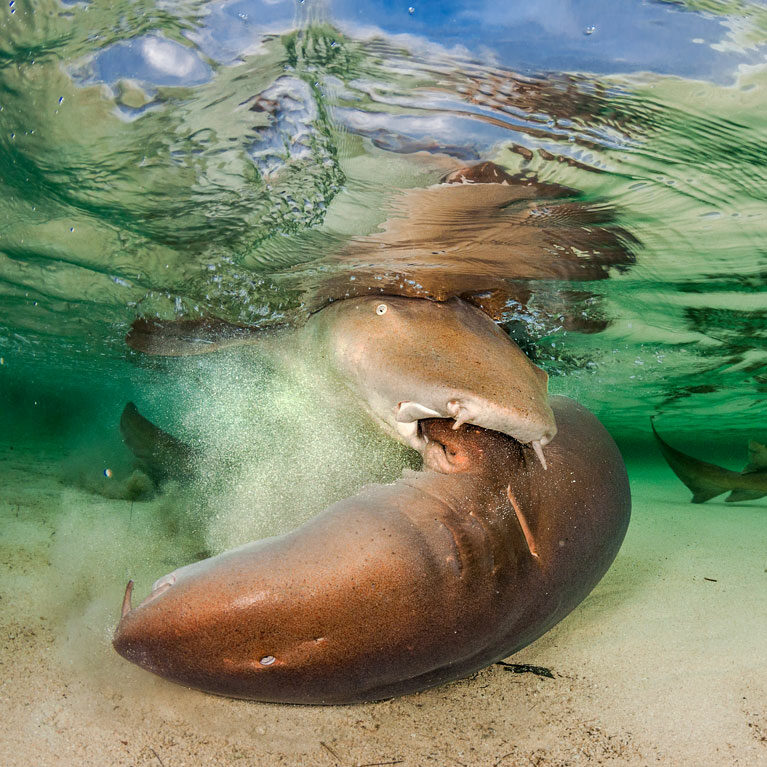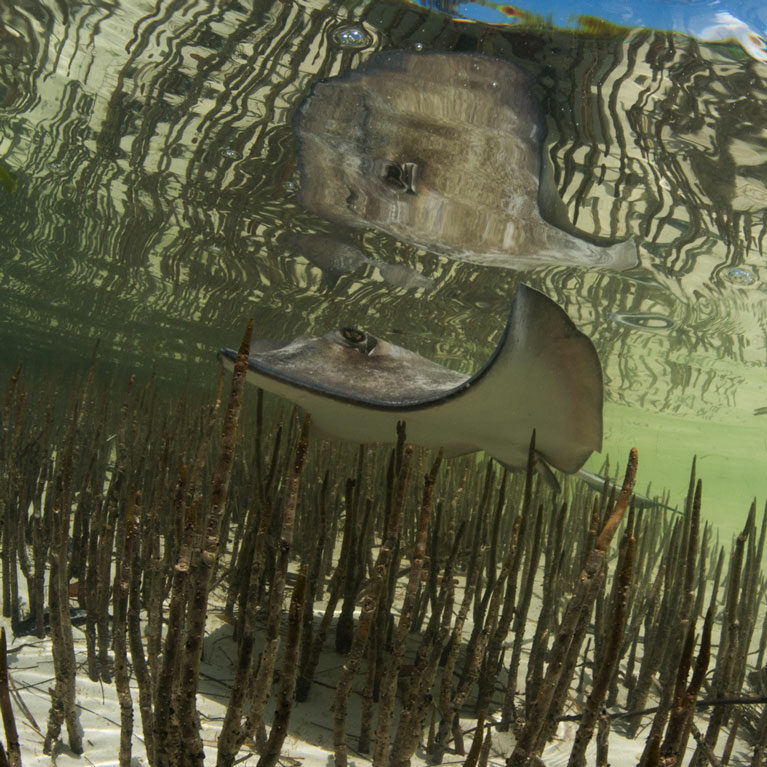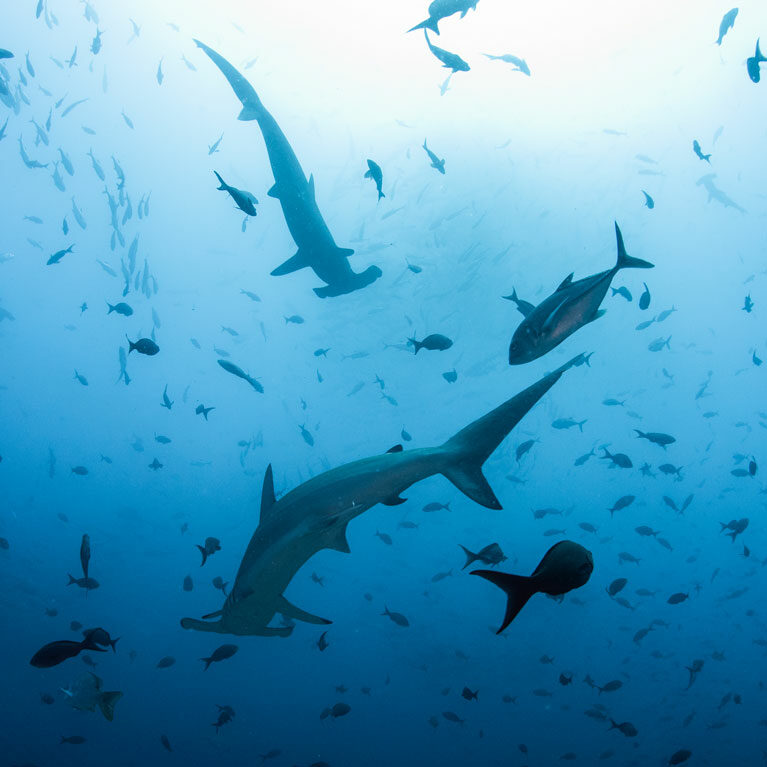Important Shark and Ray Areas
The IUCN SSC Shark Specialist Group is developing selection and review criteria to identify and delineate important regions of the world’s oceans that are critical habitats for sharks, rays, and chimaeras. Its mission is to help guide spatial planning, ensuring that essential shark, ray, and chimaera habitats are identified and that their importance highlighted to policymakers. The group hopes that these new layers of data will complement the existing Important Marine Mammal Areas, Important Bird Areas, Key Biodiversity Areas and Ecologically and Biologically Significant Areas.
I grew up in Northern California where, inspired by Jacques Cousteau and Sylvia Earle, I learned to dive in the late 1980s – using dive tables, not a computer! I am a lifelong learner with a deep interest in the marine and coastal environment. My first glamorous marine job before university was as a diver, cleaning very large habitats in an aquarium. I then went on to Humboldt State University, where I obtained my BSc in biology. My career began in software, acquiring the project management and data skills that help me now in my conservation work....
Living in Australia has allowed me to always live close to the sea and developed my passion and love for all sea creatures, but especially sharks and rays. When I became a marine ecologist, I kept my focus on researching and furthering the conservation of elasmobranchs which led me to do my PhD on current management approaches to stingrays, their effectiveness for protecting species and how to increase management of elasmobranchs in the future through targeted research and conservation initiatives for this highly threatened group.
While at university, I was fortunate enough to work extensively with large sharks through the SEQ...
My earliest and happiest childhood memories are of being on the beach in Greece, where I grew up. I remember being fascinated by all things marine and very quickly became obsessed with sharks, doubtless from a combination of watching the Jaws film series and often seeing shark meat sold in supermarkets. But all I knew then was that I wanted to learn everything I could about them and I bought every book I could find. More than 30 years later, I am probably even more in awe of sharks and realise how much more we need to learn about them.
I...



Defining Important Shark and Ray Areas
To develop an expert-driven innovative approach to ensure that discrete sections of habitat critical to shark species – Important Shark and Ray Areas (ISRAs) – are delineated and implemented in various place-based conservation and management initiatives across the world’s oceans. This first step focuses on developing standardised review and selection criteria for the delineation of these areas.
Globally, the conservation situation for chondrichthyans (sharks, rays and chimaeras) is dire. Our aim is to provide support to spatial planning approaches by ensuring that information about critical habitats for these species is available. This new layer of data will complement other similar approaches, such as those used for Important Marine Mammal Areas, Key Biodiversity Areas and Ecologically or Biologically Significant Areas. Fisheries management is a key intervention in the conservation of sharks, rays and chimaeras, but spatial planning can be equally effective if protected areas are designed to take into account the distribution of these species.
Chondrichthyans are facing a global extinction crisis. According to the IUCN Red List of Threatened Species, it is now estimated that more than one-third of these species are threatened with extinction. Over the past century, fisheries have had a significant cumulative impact on chondrichthyans and this impact has been compounded by habitat loss and climate change. Threat levels are highest in coastal areas, where 75% of threatened species occur. This makes chondrichthyans some of the most threatened taxa in the marine environment, and second only to amphibians on a global scale.
Recent innovations and developments in animal tracking, data collection and reporting have led to the recognition of discrete parts of oceans that are significant for various groups of endemic or highly mobile animals. These include Important Marine Mammal Areas, Important Bird Areas and Key Biodiversity Areas. The same approach can now be applied to sharks and other chondrichthyans to assist in their conservation. ISRAs can be used to identify locations where marine protected areas, or networks of marine protected areas, can be envisaged to protect chondrichthyan species specifically. They can also support environmental impact assessments of activities that affect chondrichthyan conservation and can be used in marine spatial planning exercises, in international, regional, national and local conservation contexts. Given the rapid degradation of the conservation status of a very high proportion of chondrichthyan species, along with the limited place-based protection these species have been benefiting from until now, implementing an ISRA approach at the global level is considered a matter of urgency.
The main objective is to identify and finalise selection and review criteria for delineating ISRAs in a guidance document that will be launched at the 5th International Marine Protected Areas Congress (IMPAC5). The supporting objectives are:
- To define the selection and review criteria for delineating ISRAs around the world.
- To determine how best to ensure that ISRAs will be accepted and implemented by governments and spatial planning practitioners.
- To launch the ISRA selection and review criteria guidance document and ensure that its information is disseminated and used by key stakeholders and funders who are interested in spatial planning.
- To present the ISRA work at IMPAC5 in September 2022.



